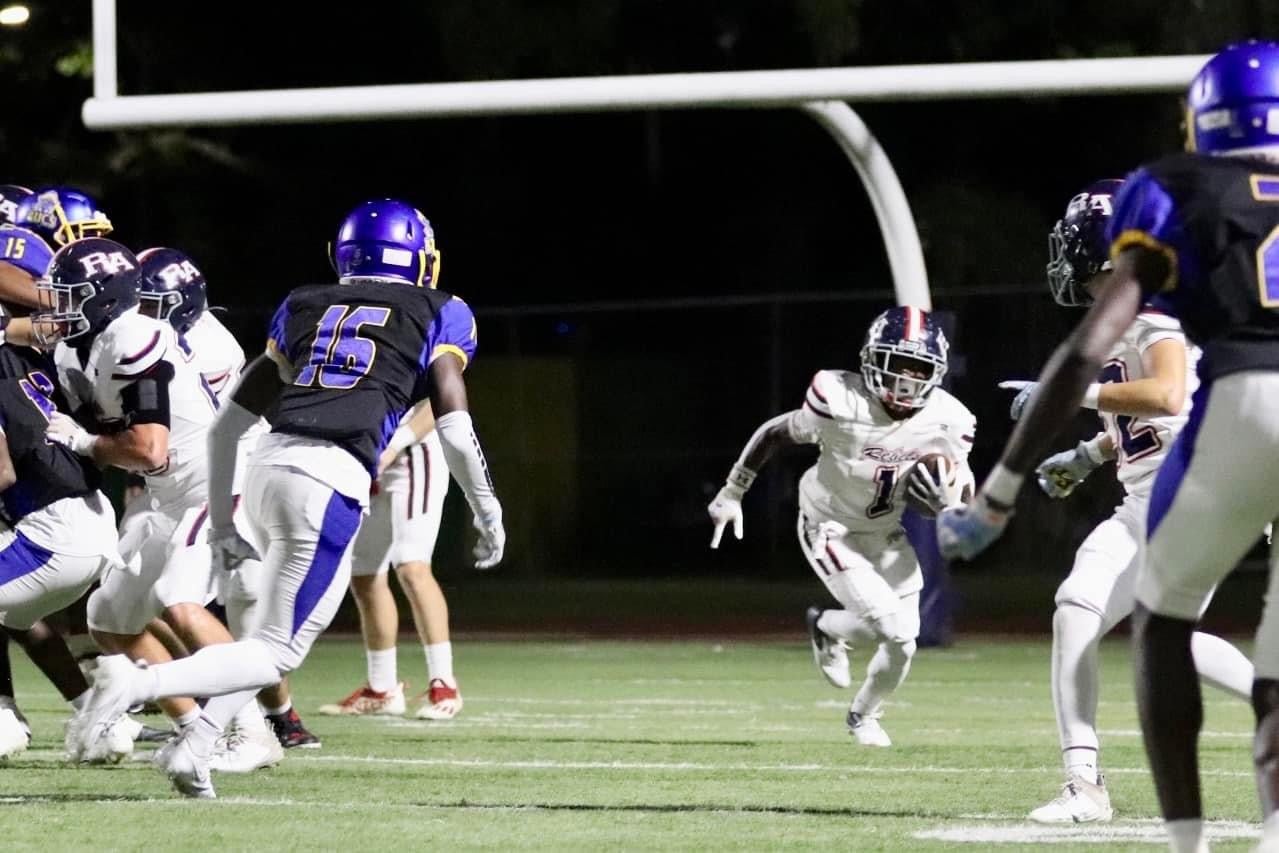Youth football program teaches discipline
Published 12:00 am Sunday, December 1, 2002
By GEORGE MAHL
LAPLACE – They may not be future National Football League stars, but they sure are trying.
Youth football is getting bigger and bigger each year in the River Parishes. Right now, there are several area youth football teams. Two of the bigger sponsors are St. Joan of Arc Catholic School and the Tri-Parish Youth Football League. SJA currently is the only catholic elementary school in the area that has a tackle football team. This makes it difficult to schedule opponents.
“For some of our games we have had to travel and play against teams in New Orleans, Abita Springs, and Chalmette,” said SJA principal Larry Bourgeois.
The LaPlace school, which started a team in the mid-1960s, has about 100 players on its current roster.
“I think when we first started the program it was around 30 players. It’s been amazing,” Bourgeois said.
Every year SJA takes a vote on whether to continue playing tackle football or switch over to flag.
“I think the vote is usually 100-0 in favor of tackle,” he said.
The Tri-Parish Youth Football League is an organization that consists of four teams. The Gramercy Tigers, Vacherie Rams, Bayou Lafourche Raiders, and LaPlace Force Fighters all compete in the league. The league recently held its playoffs and Super Bowl at St. James High School.
Currently, there are three age groups for the Tri-Parish Youth Football League. The “A” team consists of children 11-12, while the “B” team and “C” team features kids 9-10 years old, and 6-, 7- and 8-year-old boys respectively. The cut-off date for each age group is Aug. 1.
“The roster for each group can’t exceed 35 players. If you come too late, then you’ll be placed on a waiting list,” said Harold Chauvin, secretary-treasurer of the Gramercy Bantam Football Organization.
The number of players does not necessarily have to be 35.
“You may have a larger number of kids (not more than 35) for the ‘B’ team than for the ‘C’ team,” Chauvin said.
Chauvin emphasized the league has never turned away a child who wanted to play. In addition, if the child is on the “A” team, the league will have a special award for him at the end of the season.
“We like to call our ‘A’ team our seniors,” said Chauvin’s wife Sheri. “We do this because it is the last year they can play. After this, most of them will go on to play high school football.”
On the other hand, SJA, like other elementary schools, has teams broken up into various grade levels. The third- and fourth-graders form one team, the fifth and sixth grades are considered the junior varsity team, and the seventh and eighth grades make up the varsity team.
“At first, because of injuries, I really wasn’t sure about having a team for third and fourth grade. I guess I was kind of dragging my feet about it. I’m glad it ended up working out,” Bourgeois said.
This year, the Gramercy team won the championship for the “B” and “C” division, while the Vacherie team came in first place for the “A” division.
According to the Youth Football rules book, the goal of each parent or coach is to: “Teach children the fundamentals they need to have fun, let them meet new friends, and prepare them for high school.”
Chauvin said his personal goal in each game is to make every attempt to play every child.
“I don’t think anyone’s goal in this league is to get the most wins. I think it’s to make sure the kids had fun. If a team loses 20-0, so what, as long as the kids had fun, then that is all that matters,” said Chauvin.
Another one of the organization’s goals is to have priorities in order. He said most coaches try and schedule practices around school schedules (ie: tests).
“Depending on how many kids can show up, most teams practice on Tuesday and Wednesday. School work always comes first, however,” Chauvin said.
Bourgeois agreed with what Chauvin said and added his own rules.
“We want to stress three things to the kids. First, the basics about what is happening. Secondly, the safety of the game and lastly making sure they have a good time,” Bourgeois said. ” When you add up the cheerleaders, players, coaches, concession stand workers, and whoever else, its around 300-400 people total. That’s the good part about it.”
A key part of a child’s success in sports is parental support. No matter what the sport is, a parent’s support is vital if a child is to have fun and do well.
“The parents we have are extremely helpful. I really don’t think it would possible if it was not for them,” Bourgeois said.
Chauvin added, “We have parents that come and paint the field with us whenever they have time. Everyone who can contribute does.”
The 43-year-old Chauvin, who has a 10-year-old son, Ryan, playing youth football, said his son did not know the difference between a first down and a fumble when he first observed football.
“I think it’s good for the parents to watch football with their kids on TV at an early age. It helps them know what is happening before they actually play,” Chauvin said.
Bourgeois said most parents would prefer having their kids play football than stay home with a babysitter.
Parents are encouraged not to get upset with the officiating or the players’ performance.
“I would not hesitate to remove a parent if they got out of line during the game. We are all supposed to be good friends helping each other out,” Chauvin said.
The parents for the T.P.Y.F.L take it one step further for their children. The mothers organize homecoming festivities for the players at the end of the season. “Our “A” team (11-12 yrs old) walks down the field with a girl during the final game. We try to make it fun for them,” added Sheri Chauvin. She also said there is an end of season banquet for the players and their families. On occasion, the amount of people with each player can be as high as 20. “It’s just a good time for everyone involved,” she said.





